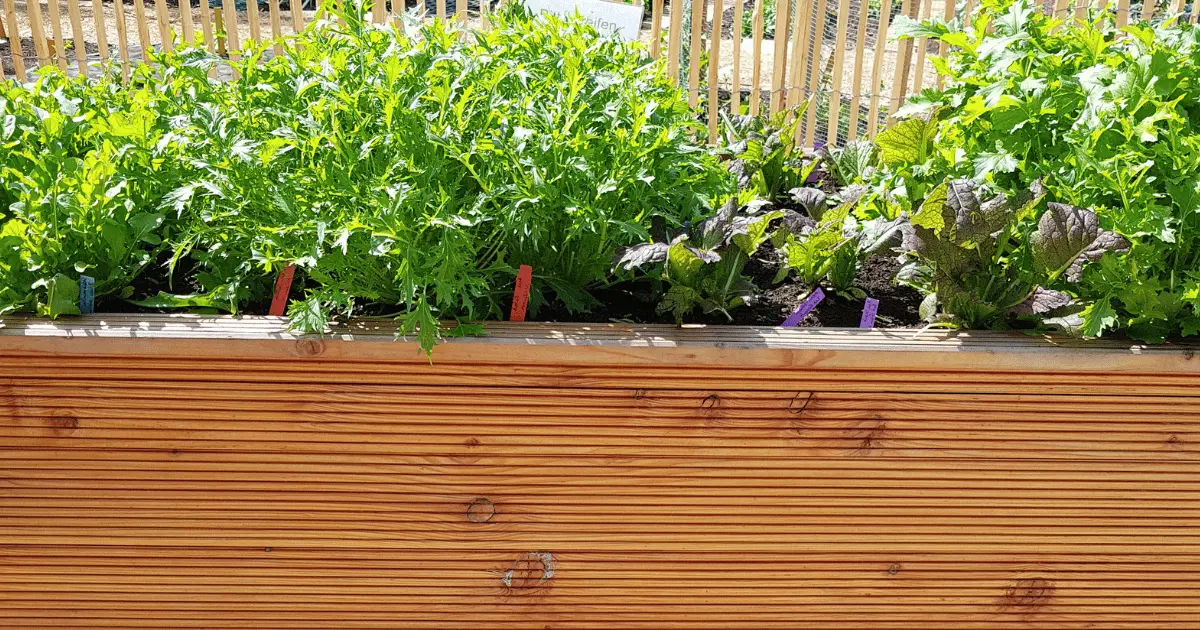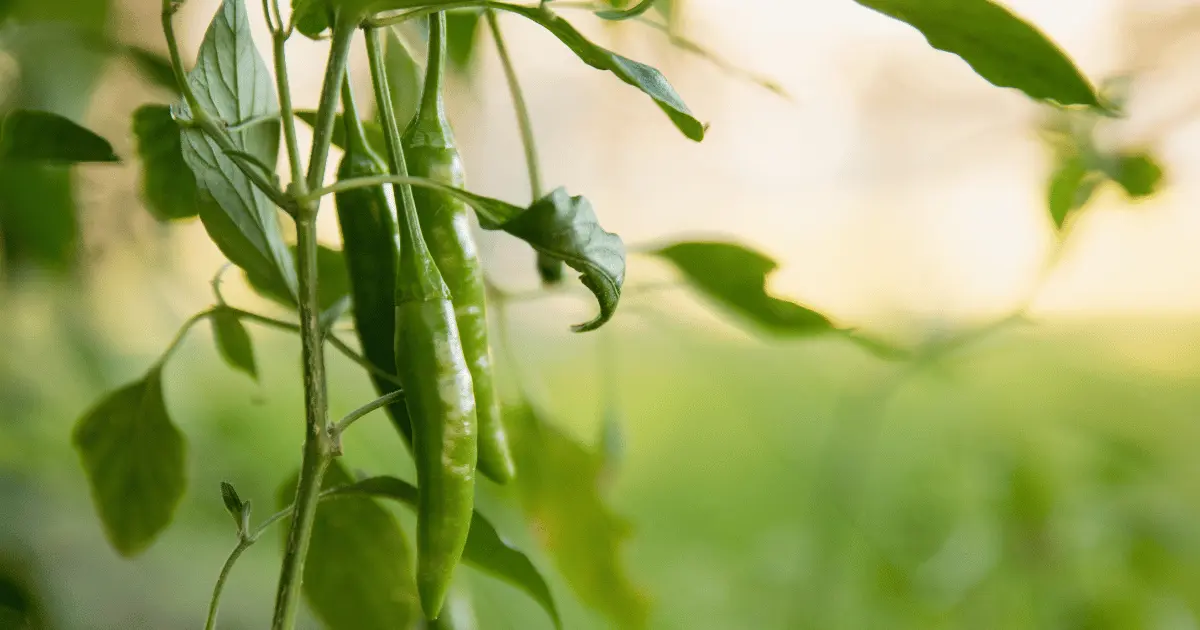Nothing slaps like the taste of jalapeños on chilli or dips. Jalapeños can spice up any meal, whether roasted, peeled, or frozen. But before salivating at the thought of food well spiced with Jalapeños, there is the issue of knowing the right spacing for them.
If you want your peppers to thrive, they must be properly spaced. A poorly spaced pepper comes with problems such as pests, fungal growth, and diseases. Thanks to my years of gardening experience, I can easily space my peppers, and I’m about to pass on that experience to you. Read on.
How far Apart to Space Jalapeños Pepper Plants

When growing plants in containers, weigh the plant’s size against the root ball. For the roots of jalapeno plants, an 8- to 10-inch container is needed. When planting jalapeño seedlings in larger pots like half barrels, space them 12 inches apart and 6 inches inside the tub’s outside corners.
Container gardens quickly lose moisture, so keep an eye on it to keep the soil moist but not drenched. When transplanting, fill the container with soil loosely around the plant, leaving a finger-sized hole to hold water and direct it into the roots.
If you are spacing your Jalapeños in a garden, place the seedlings once the soil reaches 65 degrees Fahrenheit. Ensure that any threat of frost has passed before planting (whether you started your seeds indoors or bought plants). Jalapeno seedlings are typically spaced 18 inches apart in rows 24 to 36 inches apart. You must stake the jalapeno plant for additional support once it has grown erect to twelve to twenty-four inches. Once the peppers begin to develop, the weight of the fruit may cause the plant and stem to fall. Another pepper variety that needs support during spacing is the bell pepper.
Growing and Spacing Jalapeños in Raised Bed

One of the advantages of growing Jalapeños on a raised bed is that a raised bed offers superior drainage. The weather must be warm for the Jalapeños to grow properly, and they grow successfully in most of the United States.
Planting jalapeño seedlings shouldn’t be done until the temperature is consistently above 50 to 55 degrees Fahrenheit. The temperature should be above 50 and 55 day and night. When planted at that time, the seedlings of your pepper should thrive.
Identify the area of the raised bed that receives the most sunshine. For optimum growth, jalapenos require direct sunshine. Dig deep enough holes to plant jalapeño seedlings at the same depth as they did in their seedling packs.
In a grid design, space the holes 14 inches apart. The plant’s leaves can shade out many weed seedlings as they emerge, making the most efficient use of the raised bed’s space. Place one seedling in each hole, add soil to the remaining portions, and gently compact the earth around the seedlings.
Staking Jalapeños Pepper
It is a good idea to stake your peppers even though most can support themselves. However, it is a good idea to stake your pepper when the growing season comes to a close. If you reside in an area with a long harvesting season, peppers will usually grow very tall. Also, if your area is prone to thunderstorms, your peppers can get knocked down. This is why it is important to use a trellis.
Some peppers also yield a lot of fruit, and they will appreciate the support which comes with a trellis. Bury a 2- to 3-foot garden stick made of wood, bamboo, or another sturdy material at least 6 inches deep to secure your pepper.
I usually advise that the peppers be staked when planting seeds ( I also give the same advice when spacing and staking tomatoes). You may, however, stake the plant if necessary later in the growing season. Use delicate twine to secure the stakes to the stems to prevent cutting or damaging them.
Also, be aware that when pepper plants develop and yield a lot of fruit, long branches may start to sag toward the ground. Because many plant diseases thrive in dirt, you should take every precaution to keep those branches from falling to the ground. To do this, affix a stake beneath the branch to act as support.
When and Where To Plant Jalapeños

Most people begin indoors when starting a jalapeño pepper plant from seed. Typically, six weeks before the end of the frost is good, and this is between January and March in most parts of the United States. If you start your seeds indoors, I recommend using a heating mat. A heating mat is good for the seedlings and can promote germination.
After the last frost, which often occurs after April, pepper plants can be moved outside. It is important to note that hot peppers are only found in Mexico’s sunny and warm climates, and your Jalapeños will require a climate free of cold and warm sunlight. What is the preferred soil temperature of Jalapeños? Jalapeno peppers prefer soil temperatures between 65 and 80 degrees Fahrenheit.
If you have a lot of garden space, your major problem may be looking for the best spot to plant your pepper. You should look for areas of your yard that receive direct sunlight, and Peppers enjoy the sun and will grow best in a lot of it. Once you’ve located those areas of the yard, search for one that offers some protection from strong winds. Do you remember what I said earlier about thunderstorms knocking down your peppers if you do not support them with a trellis?
You can cultivate your jalapeño peppers in containers, and they will require a container with enough space for optimal development. Since your pepper will have a similar root spread and depth to a tomato plant, try to use a pot that can accommodate a tomato plant.
Caring For Your Jalapeños
When I wake up in the morning, I water my plants. The morning is the ideal time to water pepper plants. Watering in the morning allows the vegetation to dry out during the day. Avoid allowing water to collect around the base of your plant because this could harm it( this is almost a general rule for most vegetables). It is a good idea to ensure that extra moisture can drain away from the soil quickly!
In hot temperatures, give out about 1″ of water each week. Generally, it is okay to maintain the soil evenly moist. You can water your plants’ bases with a soaker hose or by hand. I usually use my hand, you know, to feel closer to my babies!
A humidity level between 50% and 70% for pepper plants is excellent, and a humidifier or greenhouse can aid in preserving humidity levels. Don’t worry if you live somewhere with lower humidity levels; plants can handle it too. But in all, ensure that your pepper plants get enough water.
